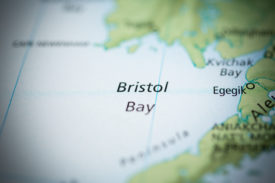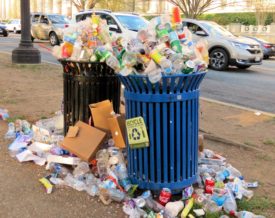Cascadia has a wealth of astonishing and pristine natural places. It’s part of why residents here are so committed to this place.
One measure of the Northwest’s bounty is the number of world heritage sites—natural and cultural places so unique that they are designated by the United Nations as the most important repositories of the planet’s ecological richness and humankind’s legacy. The boundaries of Cascadia include all or part of a number of these world heritage sites, including Yellowstone; the redwoods of California; the international peace parks of Waterton and Glacier; the Canadian Rocky Mountain Parks; SGang Gwaay, an ancient Haida village; and the Glacier Bay-Yukon region, which boasts, among other features, perhaps the most complicated name imagineable. (You can use this cool interactive map to find others.) But no world heritage gem is closer to Cascadia’s human inhabitants than Olympic National Park, an ecological treasure trove just a few miles from Seattle, Tacoma, Vancouver, and Victoria.
Why this paean to the Olympics? Because right now, Olympic National Park is charting its course for its next 20 years. And the public is allowed—nay, encouraged—to provide comment and guidance on the park’s future management.
Go here for more info on the web. Otherwise:
Comments may be mailed or faxed to Olympic National Park General Management Plan; National Park Service; Denver Service Center; P.O. Box 25287; Denver, CO 80225. The fax number is 303-969-2736.
Why should we care about Olympic National Park? For more reasons than I can possibly do justice to in a blog post. But here’s a shot anyway:
- It’s just plain special. It boasts the longest wilderness coastline in the lower 48, a mind-boggling temperate rainforest, glacier-carved peaks, and 17 species of plants and animals that are found nowhere else on earth, including this cute fellow.
- The forests of the Olympic Peninsula outside the park have been battered by decades of clearcut logging, but when they are allowed to grow the Olympic forests are prime repositories for carbon, acting to slow climate change.
- The park is big enough—and ecologicall intact enough—to allow for reintroduction of endangered species, such as fishers. It’s even considered the next best place in the Northwest for gray wolves to make a comeback. But that will not happen without a concerted effort from citizens and conservationists.
- The park’s biodiversity is threatened. One of the odder threats is from the non-native mountain goats, which—loveable as they may be—are chomping their way through rare and endangered alpine plants.
- Humans need big wild places like Olympic National Park. We’re not the same without them. I’ve always liked this reminiscence of the Olympics from poet Gary Snyder: “We had come miles without trails, you had been long alone. We talked for half an hour up there above the foaming creeks and forest valleys, in our world of snow and flowers… In this burning, muddy, lying, blood-drenched world, that quiet meeting in the mountains, cool and gentle as the muzzles of three elk, helps keep me sane.”
Send your comments to the US National Park Service. The deadline is September 30.







